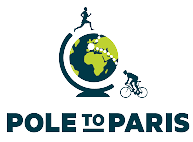Where did Samuel de Champlain travel?
Where did Samuel de Champlain travel?
In 1603, Champlain made his first trip to North America, to the St. Lawrence River to explore and establish a French colony. In 1604, he returned to northeastern Canada, and over the next four years became the first to map the North Atlantic Coast.
What maps did Samuel de Champlain make?
In the fall of 1612, Samuel de Champlain had an engraving of his first detailed map of New France made in Paris. The map contained new geographic information, based on his own explorations from 1603 onward. The site of Montreal is clearly identified.
Where did Champlain start his journey?
In the spring of 1608, Dugua wanted Champlain to start a new French colony and fur trading centre on the shores of the St. Lawrence. Dugua equipped, at his own expense, a fleet of three ships with workers, that left the French port of Honfleur.
How long was Samuel de Champlain’s voyage?
Routes. The three years stay in Acadia allowed him plenty of time for exploration, description and map-making. He journeyed almost 1,500 kilometres along the Atlantic coast from Maine as far as southernmost Cape Cod.
How did Samuel de Champlain travel?
Samuel de Champlain would take his second New World voyage under the expedition of François Gravé Du Pont. The fleet set sail from France on March 15, 1603. They crossed the Atlantic Ocean and arrived in North America.
Where did Samuel de Champlain go in America?
French explorer Samuel de Champlain began exploring North America in 1603, establishing the city of Quebec in the northern colony of New France, and mapping the Atlantic coast and the Great Lakes, before settling into an administrative role as the de facto governor of New France in 1620.
What ships did Samuel de Champlain use?
In March 1633, Champlain set sail for Quebec with about 200 colonists in three ships, Don de Dieu, St. Pierre, and St. Jean.
Is Quebec or Alaska bigger?
Québec (Canada) is 4.3% larger than Alaska (USA).
What state is Lake Champlain in?
About 56% of the Basin is in Vermont, 37% in New York, and 7% in Quebec. Visit the Lake Facts page for more statistics about Lake Champlain and its Basin. The Lake flows northward from Whitehall, New York almost 120 miles, crossing the U.S. – Canadian border to its outlet at the Richelieu River in Québec.
Who discovered Quebec?
Why is Samuel de Champlain significant? He was key to French expansion in the New World. Known as the “Father of New France,” Champlain founded Quebec (1608), one of the oldest cities in what is now Canada, and consolidated French colonies.
